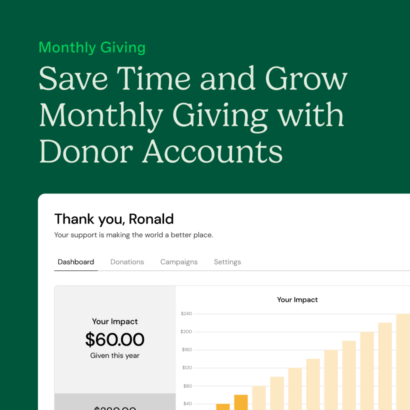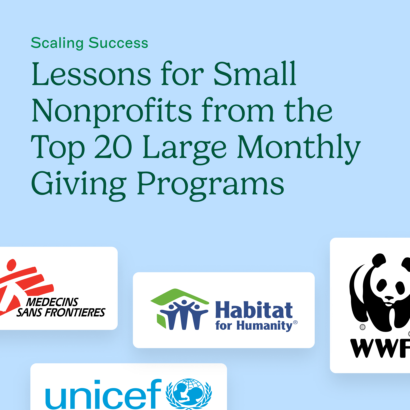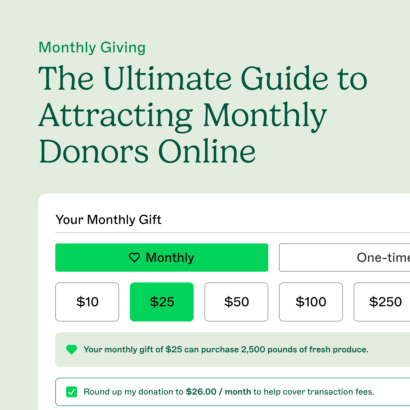Fundraisers know that there are two questions they should always be asking: Do we know who we’re fundraising to? And, subsequently, do they know what we’re fundraising for? The first question often proves to be the harder to answer.
Some major nonprofits with local chapters, like Ronald McDonald House and United Way, tackle the “who” question through affinity groups. Others target their marketing programs to segments through paying marketing firms major cash to do focused and data driven research. Still, others stick to blanket fundraising approaches, like general direct mail campaigns.
None of these solutions, however, are particularly feasible for smaller, community-based fundraisers, or even midsized nonprofits keeping a close watch on overhead and striving to increase fundraising.
Gaining a data-rich community context can be a pricey and time-consuming endeavor, but there are a few free tools that all fundraisers should have in their toolkit to help them gain a high-level understanding of their constituents. Together, these tools can offer up the best of quantitative and qualitative demographic data.
A Ten-Year Treasure Trove
Fundraisers probably don’t often think to check one of the oldest and most robust data banks in the nation. However, the U.S. Census might just be one of your fundraiser’s best friends. The online census allows users to look at information down to the zip code. You can find general statistics (usually medians) relating to household income and size. It’s also one of the most reliable databases for finding the median age in a given area.
You might assume you know your service area like the back of your hand. For example, some might think that an area around an elementary school is full of young families, but it may well be that there are other zipcodes skewed much older or much younger in that neighborhood. This information is critical in stretching your time and money efficiently when it comes to determining what your marketing mix should be.
And, despite what they say, age is more than just a number. Age data gives you a sense of what might be useful or appealing to a given audience, which can quickly help you pick the right media and channels for your messages. For example, women in the 30-50 age range are far more likely to be Facebook users than Instagram users. Once you know some of the basic quantitative demographics in your area, do some online research to see what type of content and what channels are most effective.
Not Just for Television
One great place to start cultivating the qualitative demographics of your community is Nielsen.
Nielsen might be most synonymous with television monitoring, but their big data solutions have made them a leader in developing consumer personas—a profile based on intersectional factors like those demographics mentioned above, plus stages of life, types of employment and even spending habits.
Like the U.S. Census, Nielsen drills down to the zip code, making it another useful tool for the fundraising crew at any school or community organization. Their MyBestSegments tool is a free service using Nielsen’s Prizm Segmentation System that provides a limited look at high-level information about the personas that comprise a zip code. The quirky, creative and surprisingly insightful profiles can help you form an idea about the “type of person” to which your student body might be marketing their fundraising solutions.
The Nielsen profiles are by no means meant to glaze over the diversity of a given area, but they do help distill a lot of data into pre-packaged interpretations for which marketers used to pay hefty fees. Dive in and see if you school fundraiser needs ideas for “Bedrock America” or “Bright Lights, Li’l City” neighborhoods.
Connect the Dots
Age and income may eliminate a handful of options from all the possible fundraising solutions before you, but adding in the Nielsen profiles can add a completely new layer that incorporates more qualitative interests grounded in quantitative data.
If you’re trying to decide between a number of similar options for a fundraising campaign, go beyond price point and raw census data and take Nielsen into consideration. Is the area young and particularly interested in health and wellness? Host a 5k. Is the area mostly middle-class families? Consider hosting a charity festival. Do corporations surround you? Think about workplace giving.
Data-driven decisions are all about helping fundraisers gain support at their intersections, and you’ll slowly start to see the big mass of communities distill themselves into slightly neater groups. You’ll be able to communicate with these groups by delivering messages of impact that appeal to them and begin to build strategies for engagement that retain donors over time.
Fundraise to Your Local Culture
Ultimately, you know your own stakeholders better than anyone, so in many ways, the most potent source of information and “data” for fundraising efforts are those people you do life with on a daily basis. The relationships you form in the communities in which you and your family live, work and play can make for powerful prospect lists, and their networks become vital networks for sharing the mission underpinning your fundraising efforts.
Keep reading
Once a week or so we send an email with our latest article on online fundraising, nonprofit marketing and more. We never bug you; we just send you our latest piece of content. Subscribe now >



